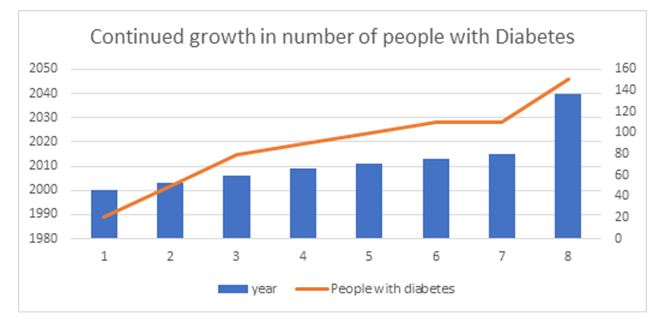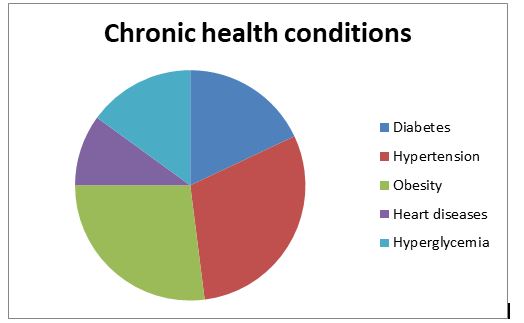Theme: Exploring the new technologies in the field of Diabetes and Endocrinology
ENDOCRINOLOGY MEET 2023
Conference series welcomes you to the “6th Annual Meeting on Diabetes and Endocrinology” which is going to be held during April 20-21, 2023 Barcelona, Spain. This Diabetes Conference will focus on the theme “Exploring the new technologies in the field of Diabetes” that provide a programme to discuss about Diabetes related disorders and its advances.
The ENDOCRINOLOGY MEET 2023 Conference provide a global programme for discussion, interchange of ideas that include prompt keynote presentations, Oral talks, Poster Presentations, Video Presentations and Exhibitions, Symposiums, Workshops, Young Researcher’s Forum on latest treatment, obstruction methods in Endocrinology. The conference prepares networking sessions by gathering Endocrinologists, Gynaecologist, Gynaecology Practitioners, Women’s health Care Researchers, Students from Academia and Young researchers across the globe.
Why to attend
ENDOCRINOLOGY MEET 2023 is the program where you can debate experts, officials, authorities and CROs from around the world. It’s your time to grab the opportunity to join ENDOCRINOLOGY MEET 2023 in a group of Delegate, discussion, Speakers, Poster, video proposal, Business Meetings, Networking and extra benefits for our Event Sponsor. The most modern approaches, upgrades, interchanging new ideas and research updates in Diabetes related disorders and its advances are signs of this conference.
The conference welcomes spokesperson from the every educational institutes, clinical examination authority and suggestive organizations to come up with their researches, giving a exhibit of the new Diabetes and Endocrinology procedures. It fills the gap between particular and enterprises carry out the further impressive innovations.
Target Audience
- Endocrinologists
- Diabetologist
- Researchers
- Students
- Nurse educator
- Dietitian
- Neurologists
- Ophthalmologist
- Cardiologists
- Nephrologists
- Diabetes societies & associations
- Medical & Pharmaceutical companies
- Endocrinology, Diabetes & Metabolism students
- Endocrinology, Diabetes & Metabolism Researchers
Track 1: Diabetes and Endocrinology
Diabetes could be a cluster of metabolic disorders characterised by high glucose levels over a chronic amount primarily because of hypoglycaemic agent deficiency or resistance. Symptoms of high glucose embrace frequent voiding, exaggerated thirst, exaggerated hunger, and weight loss. If left untreated, polygenic disorder will cause several complications. Acute complications will comprise diabetic acidosis, hyperosmolar hyperglycaemic state, or death. Serious semi-permanent complications carry with it upset (CVD), stroke, chronic nephritis, foot ulcers, and harm to the eyes. Endocrinology is that the branch of biology that deals with the study of the system, hormones, and its disorders. It additionally involves the study of growth and development, metabolism, digestion, tissue operate and numerous different activity factors that area unit influenced by hormones.
- Excessive Thirst
- Vision Changes
- Constant Hunger
Track 2: Diabetes and its types
The most common varieties of polygenic disorder area unit sort one polygenic disorder, sort two polygenic disorder, and physiological state polygenic disorder. Type one polygenic disorder (also called polygenic disorder mellitus) is associate degree disease within which immune cells attack and destroy the insulin-producing cells of the exocrine gland i.e., beta cells. The loss of hypoglycemic agent ends up in the lack to control glucose levels. It will occur each by genetically and environmentally. Patients area unit sometimes treated with insulin replacement medical care. Type two DM may be a unwellness characterised by high levels of glucose (hyperglycemia). It starts as hypoglycemic agent resistance, which implies our body can’t use hypoglycemic agent with efficiency. Factors could embody genetic science, lack of exercise, and being overweight. Gestational polygenic disorder is because of interference of hypoglycemic agent hormones created throughout maternity.
- Type 1 diabetes
- Type 2 diabetes
Track 3: Diabetic Complications
High levels of sugars or aldohexose within the blood cause such a chronic condition known as diabetes. High aldohexose within the blood might cause eye injury, nerve injury, and urinary organ injury, loss of sensation in sexual organs (sexual dysfunction). Malady will increase the danger of varied vessel diseases like arterial blood vessel disease, coronary failure, heart stroke and narrowing of arteries that reduces the blood flow through the arteries. Additionally to the current, individuals with polygenic disease have additional possibilities to develop infections which will cause allergies. Polygenic disease is that the main cause for vessel diseases, failure, and cecity. Polygenic disease can even cause foot ulcers and hearing issues, individuals with polygenic disease have impairment unremarkably.
- Kidney damage
- Eye damage
- Foot damage
Track 4: Pediatric Diabetes
The most common style of polygenic disease that happens in kids is kind one polygenic disease. it's a standard chronic childhood diseases, occurring in one in 350 kids by age 18; the incidence has recently been increasing, significantly in kids but five twelvemonth. Though kind one will occur at any age, it naturally expresses between age four twelvemonth and half dozen twelvemonths or between ten twelvemonths and fourteen twelvemonths. Kind a pair of polygenic disease, once rare in kids, has been increasing in frequency in parallel with the rise in childhood fleshiness (in children). It usually manifests when time of life, with the very best rate between age fifteen twelvemonth and nineteen twelvemonths (in adolescents).
- Frequent urination
- Darkening skin
- Blurred vision
Track 5: Diabetes & Vascular Diseases
Heart disease could be a complication that will have an effect on individuals having polygenic disease if their condition isn't managed well for a protracted amount of your time. High force per unit area Hyperglycemia that characterizes polygenic disease, together with free fatty acids among the blood will alter the character of blood vessels, and this could cause cardiopathy. Tube disorders embrace arteria malady (CAD), diabetic retinopathy (damage to the vision) and kidney disease, peripheral tube malady (PVD), and heart stroke. polygenic disease conjointly affects the guts muscle that causes each pulsation and beat failure.
- Atherosclerosis
- Coronary heart disease
Track 6: Diabetes Nursing
One of the foremost important options of polygenic disorder management is that the self-management of polygenic disorder which might be effectively achieved, and complications prevented with the assistance and support of the nursing team. polygenic disorder specialist nurses play a necessary role in screening diabetic persons, police work early onset of polygenic disorder, considering nutritionary wants of the patient, promoting self-management, providing bar recommendation, spreading awareness on polygenic disorder and providing health education. It’s terribly necessary for nurses to be educated, trained and trained sufficiently to be ready to proficiently deliver care, support self-management and supply recommendation to diabetic persons.
- Exercise burns calories
- Oral hypoglycemic agents
Track 7: Cardiology
Cardiology disease is a branch of general medicine involved with disorders of the center. It deals with the diagnosing and treatment of heart diseases like nonheritable heart defects, artery illness, electrophysiology, cardiopathy, and vascular illness. Viscus electrophysiology, diagnostic procedure, nuclear medical specialty, and interventional medical specialty square measure the fields enclosed by medical specialty.
- Chest tightness or pressure
- Fatigue
- Dizziness or fainting
Track 8: Heart Diseases
Heart disease describes a spread of disorders that have an effect on the guts. Diseases below cardiopathy embody vessel diseases, like arterial blood vessel wellness, arrhythmias, and innate heart defects. Cardiopathy term is typically used interchangeably with disorder. It usually refers to conditions that involve narrowed or blocked blood vessels that will end in coronary failure, pain (angina) or stroke. Different heart conditions, like result in valves or rhythm, are thought of types of cardiopathy.
- Heart rhythm problems
- Heart valve disease.
Track 9: Hypertension
Hypertension is medical term used for prime vital sign, and it's a significant medical condition that refers to a viscus malady. The pressure of the blood being pumped up through the arteries is higher throughout cardiovascular disease. It’s of 2 kinds of high vital sign primary and secondary. Vital sign is that the force exerted by the blood against the blood vessels walls, and also the magnitude of this force solely depends on the flow rate and also the resistance of the blood vessels. The cardiovascular disease usually doesn't cause any symptoms however the future cardiovascular disease causes a significant risk issue for heart disease, artery malady, stroke, peripheral tube malady, vision loss, and chronic nephrosis. Treating high vital sign take a pronged approach as well as, medication, exercise and diet changes.
- Chest pain
- Irregular heartbeat
- Difficulty breathing
Track 10: Congenital Heart Disease
Congenital heart disease is one or more problems with the heart's formation that survive since birth. Congenital heart disease, also known as congenital heart defect, can redoing the way blood flows through your heart. Few congenital heart defects might not cause any problems. Complex defects, but, can cause life-threatening difficultly. Proceed in identification and therapy has permit babies with congenital heart disease to live well into adulthood. Occasionally, signs and symptoms of congenital heart disease aren't seen until you're an adult.
- Swelling of the legs
- Extreme tiredness and fatigue
Track 11: Thyroid Disorders
Between the hormones it causes, the thyroid gland effect almost all of the metabolic processes in your body. Thyroid disorders can vary from a small, safe goiter enlarged gland that requires no therapy to life-threatening cancer. The most frequent thyroid problems involve abnormal production of thyroid hormones. Too much thyroid hormone results in a state known as hyperthyroidism. Deficient hormone production leads to hypothyroidism. Although the effects can be irritating or uncomfortable, most thyroid problems can be direct well if properly diagnosed and treated.
Track 12: Diabetes and Cancer
Medical executives have come to realize that diabetes, specially Type 2 diabetes, is connected to a variety of diseases. The high blood glucose from diabetes can harm the blood vessels and nerves that rule the heart and blood vessels, increasing the likelihood of expanding heart disease and kidney disease. Until recently, the relationship between diabetes and cancer was a mystery. Hyperglycaemia is a indication that identify diabetes, means that the DNA in people with diabetes assist more damage and gets fixed less often when blood sugar levels are high contrast to when blood sugar is at a normal, healthy level. It is this process on the DNA that increases a diabetic’s cancer risk.
- Jaundice
- High blood sugar levels
- Nausea and vomiting
Importance and Scope:
Endocrinology Meet 2023 will feature the latest developments in research, diagnosis and prevention and management of diabetes, new insulin analogues and new technologies and devices for diabetic prevention, and for treating obesity and many more. Not only will this innovative conference enhance your practical and theoretical knowledge, it will provide you with the unique
DM affects an estimated 29.1 million people in the United States and is the 7th leading cause of death. It increases the all-cause mortality rate 1.8 times compared to persons without diagnosed diabetes. It Increases the risk of heart attack by 1.8 times, in addition to these human costs, the estimated total financial cost of DM in the United States in 2012 was $245 billion, which includes the costs of medical care, disability, and premature death.
The importance of both diabetes and their comorbidities will continue to increase as the population ages. Therapies that have proven to reduce microvascular and macrovascular complications will need to be assessed considering the newly identified comorbidities.
Market value on Diabetic Research:
More than 150 million expected to have diabetes by 2040
According to the International Diabetes Federation, more than 100 million people have diabetes in China, more than any other country in the world. Recently the number of cases has increased rapidly in recent years and it is expected to reach 151 million by 2040.
Almost 500 million more suffer from so-called “prediabetes” a stage where blood sugar levels are high, but not high enough to trigger a diagnosis indicating what the IDF calls “the enormity of diabetes as a public health problem in China.”More than 11% of Chinese adults suffered from the disease in 2013, according to a study by Chinese scientists published in the Journal of the American Medical Association, up from less than 1% in the 1980s and about twice the amount in 2000. By comparison, about 9% of adults in the U.S. are diabetic, up from around 6% in 2000, data from the U.S. Centers for Disease Control and Prevention show.
The rise comes as many Chinese are changing their diet and lifestyle amid improving living standards and a rush to live in cities. This, health experts say, has led to obesity and less physical activity type II diabetes, the most common form, is commonly considered a lifestyle disease for many.
High levels of pollution in major cities, which can contribute to diabetes by raising blood pressure and resistance to insulin, is also seen as a culprit, according to health experts.
Big Changes Coming to The Wound Care Market In 2023
The Center for Medicare and Medicaid Services (CMS) has proposed switching wound care reimbursement from the current pay-for-service model, in which the treating physician bills the government based on the number and type of procedures performed, to a pay-for-performance model in which reimbursement is fixed for a given diagnosis. The change in it is intended to incentivize physicians to pursue the most cost-effective treatment modalities and then minimize the nation's health bill, will dramatically change the wound care market by shifting market share away from high-tech products with little demonstrated therapeutic benefit to those with more cost-effective solutions.
Introduction to the Wound Care Market
Some conditions such as non-healing diabetic foot ulcers and venous legs ulcers are a tremendous burden on the health care system. While a more than half of diabetic foot ulcers heal within 10 weeks, 13% remain unhealed a year after presentation. The patient with severe diabetic foot ulcer is looked after by healthcare provider about 13 times per year and they are hospitalized about thrice a year. Approximately 900,000 Americans experience diabetic foot ulcers each year, corresponding to an annual healthcare expenditure of $10 to $15 billion dollars. Two million Americans experience venous leg ulcer each year, adding an additional $2 billion to the nation's healthcare bill.
Societies Associated with Diabetes Research
- SBDR - Society for Biomedical Diabetes Research
- Austrian Diabetes Association
- Flemish Diabetes Association
- Association of Juvenile Diabetes
- Canadian Diabetes Association
- Juvenile Diabetes Foundation of Chile
- German Diabetes Union
- Diabetic Society of Singapore
- Japan Diabetes Society
- Hong Kong Diabetes Federation
- The International Society of Gynecological Endocrinology
- Royal Society of Medicine Endocrinology and Diabetes Section
- International Society of Psych neuroendocrinology
- International Neuroendocrine Federation
- European Society of Endocrinology
- Clinical Endocrinology Trust
- Swiss Diabetes Society
- Spanish Diabetes Society
- Korean Diabetes Association
Globe Hospitals:
- Upper River Valley Hospital – New Brunswick, Canada
- Hackensack University Medical Center – Hackensack, New Jersey
- Legacy Salmon Creek Medical Center – Portland, Washington
- Wooridul Spine Hospital – Seoul, South Korea
- St. James’ Institute of Oncology/Leeds Cancer Centre – West Yorkshire, U.K.
- Houston Methodist Hospital – Houston, Texas
Universities Associated:
- Magnetic Resonance Centre
- Newcastle Clinical Research Facility
- University of Science, Malaysia
- Technical University of Malaysia Malacca
- MARA University of Technology
Endocrinology Meet 2022 Report
Conferenceseries takes a great pride in announcing the conclusion of “5th Global Meeting on Diabetes and Endocrinology” which was held in April 02, 2022 as a webinar.
Endocrinology Meet 2022 has received a benevolent response from all over the world. This has been conducted with the aim and the categorical intent of promoting the developments of new perceptions and ideas for exploring the high level of knowledge reached by scientific community. The extremely illustrious conference hosted by ME Conferences was marked with the attendance of young and brilliant researchers, business delegates and talented student communities representing more than 25 countries around the world.
The event implanted a firm relation of upcoming strategies in the field of Diabetes with the scientific community. The conceptual and applicable knowledge shared, will also foster organizational collaborations to nurture scientific accelerations. The Organizing Committee would like to thank the moderator David Probst from Arizona State University, USA for his contribution which resulted in smooth functioning of the conference. The conference witnessed an amalgamation of peerless speakers, who enlightened the crowd with their enviable research knowledge and on various alluring topics related to the field of Diabetes. The highlights of the conference were the keynote forum by prominent scientists, of which the following topics were highlighted:
Conferenceseries has taken the privilege of felicitating Endocrinology Meet 2022 Organizing Committee, Editorial Board Members and Keynote Speakers who supported for the success of this conference. The success of the International Conference on Endocrinology Meet 2022 has given us the prospect to bring the gathering one more time, ME conferences hosted the 5th Global Meeting on Diabetes and Endocrinology” which was held in April 02, 2022 as a webinar.
Let us meet again @ ENDOCRINOLOGY MEET 2023
Conference Highlights
- Diabetes and Endocrinology
- Diabetes and its types
- Diabetic Complications
- Pediatric Diabetes
- Diabetes & Vascular Diseases
- Diabetes Nursing
- Cardiology
- Heart Diseases
- Hypertension
- Congenital Heart Disease
- Thyroid Disorders
- Diabetes and Cancer
- Biomarkers for Diabetes
- Neuro Endocrinology
- Diabetes Mellitus
- Gestational diabetes
- Prediabetes
To share your views and research, please click here to register for the Conference.
To Collaborate Scientific Professionals around the World
| Conference Date | April 20-21, 2023 | ||
| Sponsors & Exhibitors |
|
||
| Speaker Opportunity Closed | |||
| Poster Opportunity Closed | Click Here to View | ||
Useful Links
Special Issues
All accepted abstracts will be published in respective Our International Journals.
- Journal of Diabetes & Metabolism
- Endocrinology & Metabolic Syndrome
- Endocrinology & Diabetes Research
Abstracts will be provided with Digital Object Identifier by






